Posted by Zosi Team

After long months, you have carefully crafted a product you are certain customers will love; next is the ultimate goal: to see your product on store shelves or, better yet, featured on a menu.
But how do you catch the eye of a buyer? A buyer’s concern beyond taste, appeal and marketability is the safety of your product – the last thing either of you want is to be associated with a food safety recall. Make it easy for a retailer or foodservice establishment to trust your product by demonstrating you have a solid food safety plan in place.
But what food safety programs will convince the buyer you’ve got this? From hand washing to food fraud, some programs you are likely to already have but will need to evolve them as you grow and expand, other programs you may never thought of.
8 Steps to Food Safety Success
An SQF Fundamentals certification is a great way to tackle this. These 8 steps will help you along the path to food safety success.
- Learn about SQF Fundamentals
- Register in the SQFI assessment database
- Identify your food sector categories (FSCs)
- Build your food safety team
- Document and implement SQF Fundamentals
- Select a certification body
- Conduct a pre-assessment
- Schedule the SQF Fundamentals audit
1. The first place to start is to learn about SQF Fundamentals.
One of the best ways to learn how to put together a food safety program based on SQF Fundamentals is to use one of our SQF training solutions, such as the Implementing the SQF Fundamentals Code for Manufacturing e-Learning Course.
2. Register in the SQFI Assessment Database.
Sites are required to register in the SQFI assessment database before they begin the certification process. This lets SQFI know you’re interested. Registration is annual, and there is a fee per site payable at registration and renewal. The database and fee chart can be accessed from the SQFI website (sqfi.com). Your site must register with SQFI prior to certification and must remain registered to retain your certification. If your site fails to maintain registration, your certificate will be invalid until you are properly registered in the SQFI assessment database.
3. Identify your food sector categories (FSCs)
SQF food sector categories help identify which food safety requirements best fit your product and its production process. In other words, the food sector category points you to the applicable GMP module you will follow and be audited to.
Use the chart below to figure out which FSC is right for you:

4. Choose your type of certification
Even though there are still the initial three levels of certification (Level 1, 2, 3), they have different designations now. Fundamentals (Level 1) is meant for small- and medium-sized food suppliers that are wanting to build or strengthen their food safety management program and move toward GFSI certification. Food Safety (Level 2) uses a HACCP-based approach to meet almost all of the GFSI-benchmarked food safety standards. Food Safety and Quality (Level 3) is meant to monitor and control threats related to food quality in facilities that already have a robust SQF Food Safety Plan.
5. Obtain proposals from SQF Licensed Certification Bodies.
Use resources on the SQFI website to find a Certification Body. These Certification Bodies employ the site auditors and they have to be accredited as well and this accreditation has to be renewed annually. Reach out to at least one of these businesses in your area to get a proposal to see which one is best for you.
6. Conduct a pre-assessment (optional).
Once you’ve done all the previous steps, either an SQF Auditor or SQF Practitioner can perform a pre-assessment of your program. By doing this, you can evaluate your program and identify where it might be missing something to get the kind of certification you’re wanting. Even though this step isn’t required, it’s a good idea to do this so you can make sure what you’ve put in place is enough to meet requirements and if it isn’t, get a better understanding of what you still need.
7. Choose a certification body and schedule an audit.
By having multiple proposals, you can compare and learn which company best suits your needs and your facility. After you choose, contact that Certification Body so that you can set up a scheduled time for an audit with them.
8. The Certification Body conducts initial certification audits.
When you’re first getting your SQF Certification, the initial audit is different than any that follow. Initial audits consist of a Document Review, or Desk Audit, and a Facility Assessment, or Facility Audit. The combination of these two assessments decides if you meet the standards just in theory or in practice as well.
These steps don’t all take the same amount of time, obviously. Getting to know what the SQF Code is and how to actually put everything in place takes more time than just scheduling the audit. If you’re looking to designate your SQF Practitioner or get a better understanding of the code, Zosi is here for you. Our online SQF catalog has resources to get you on track for whichever aspect you need—from updates to SQF Practitioner training. Taking your first step to SQF Certification sets you apart and supplies you with the resources and recognition to make your food safe and provide reassurance to your consumers.



